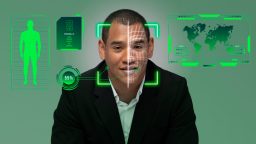The integration of technology into education has revolutionized the way we learn, teach, and interact with knowledge. Over the past few decades, advancements in technology have opened up new opportunities, making learning more accessible, engaging, and efficient. From interactive classrooms to online courses and AI-driven learning tools, technology is reshaping education across all levels, from primary schools to universities. In this article, we’ll explore how technology is transforming education and the benefits it brings to students, teachers, and institutions alike.
- Enhanced Access to Learning Materials
One of the most significant impacts of technology on education is the enhanced access to learning materials. In the past, students were limited to textbooks and printed resources, often constrained by the availability of materials in their local libraries. However, the internet has made it possible to access vast amounts of information and educational content online.
Platforms like Google Scholar, Khan Academy, Coursera, and edX provide free or affordable access to textbooks, research papers, video tutorials, and entire courses. Students can now learn about almost any subject, anytime and anywhere, allowing them to pursue education at their own pace. This is especially valuable for learners in remote areas who previously may not have had access to quality educational resources.
- Personalized Learning
Technology allows for a more personalized approach to education, catering to the individual needs and learning styles of each student. With the help of AI and adaptive learning platforms, teachers can create tailored lesson plans that meet the specific needs of their students. For instance, software like DreamBox Learning and Smart Sparrow adapts in real-time to a student’s progress, offering exercises that match their current skill level and providing extra support where needed.
Personalized learning not only helps students understand the material better but also improves engagement. By learning at their own pace and receiving targeted feedback, students are more likely to retain information and feel confident in their learning abilities.
- Online Learning and Virtual Classrooms
The rise of online education has been one of the most significant developments in recent years, with the COVID-19 pandemic further accelerating this trend. Online learning platforms, such as Zoom, Google Classroom, and Microsoft Teams, have enabled educators to conduct virtual classes and share resources with students remotely.
Distance learning allows students to access courses that might otherwise be unavailable to them due to geographical or time constraints. It also enables people to pursue higher education while balancing work and family commitments. In addition to traditional university courses, many schools are offering blended learning models that combine in-person and online instruction, giving students more flexibility in how they learn.
- Interactive and Engaging Learning Tools
Technology has made learning more interactive and engaging. Interactive tools, such as virtual whiteboards, online quizzes, and collaborative platforms, make lessons more engaging and enjoyable for students. Platforms like Kahoot! and Quizlet allow students to test their knowledge in a fun and competitive way, while apps like Padlet and Google Docs encourage collaboration and communication among students, even when they are working remotely.
In addition to these tools, educational video games and simulations have become valuable learning resources. Games like Minecraft Education Edition and simulations of historical events or scientific experiments allow students to immerse themselves in the subject matter in a hands-on way, reinforcing what they learn through experience.
- Real-Time Feedback and Assessment
One of the challenges teachers face is providing timely feedback to students. With technology, real-time assessments are now more accessible. Tools like Google Forms and Socrative allow teachers to create quizzes and surveys that give instant feedback to students, helping them identify areas of improvement.
In addition, AI-driven tools like Gradescope and Turnitin assist with grading assignments and offering suggestions for improvement, saving teachers time and allowing them to focus on providing more personalized support to students. This real-time feedback loop helps students stay on track, making learning more efficient and targeted.
- Enhancing Collaboration and Communication
Collaboration and communication are key components of modern education, and technology is making these processes more seamless. Students and teachers can communicate easily through email, messaging apps, and video calls, breaking down geographical and time barriers.
Furthermore, collaborative platforms like Google Drive and Microsoft OneDrive allow students to work together on projects, share documents, and provide feedback in real time. This promotes teamwork and prepares students for future careers, where collaboration across teams and locations is often required.
- Virtual and Augmented Reality
Virtual reality (VR) and augmented reality (AR) are two cutting-edge technologies that are transforming education by providing immersive learning experiences. VR allows students to experience historical events, visit far-off places, or even conduct scientific experiments without leaving the classroom. For instance, students can take a virtual field trip to the ancient pyramids of Egypt or travel through the human bloodstream to learn about biology.
AR, on the other hand, enhances the real world by overlaying digital information on physical objects. For example, using an AR app, students can view 3D models of planets or molecules in the palm of their hands, making abstract concepts easier to understand and interact with.
Both VR and AR make learning more engaging and interactive, offering hands-on experiences that traditional methods cannot replicate. These technologies can be particularly beneficial in subjects like history, science, and engineering, where visualisation is key to understanding complex concepts.
- Breaking Down Barriers to Education
Technology has the potential to break down barriers to education, such as socio-economic status, disabilities, and language. Online learning platforms, digital textbooks, and educational apps can provide equal access to quality education regardless of a student’s background.
For students with disabilities, assistive technologies like speech-to-text software, screen readers, and adaptive keyboards ensure that all learners have the opportunity to succeed. Translation tools also enable students to learn in their native languages or explore content in multiple languages, further expanding access to education on a global scale.
- Preparing Students for Future Careers
Incorporating technology into education also helps prepare students for the workforce of the future. As automation and artificial intelligence continue to shape industries, the demand for tech-savvy workers is growing. By integrating technology into the classroom, students gain exposure to important digital tools and skills, such as coding, data analysis, and digital communication, which will be essential in their future careers.
Moreover, technological tools like coding platforms, robotics kits, and 3D printing offer students hands-on experience with cutting-edge technology, giving them a competitive edge in fields like engineering, programming, and design.
Final Thoughts
Technology is revolutionizing education by making learning more accessible, engaging, and efficient. From enhancing access to information to creating immersive learning experiences, technological advancements are reshaping the way students learn and teachers teach. As technology continues to evolve, it will undoubtedly continue to play a central role in shaping the future of education, offering new possibilities for students and educators alike. Embracing these changes will be essential to ensuring that learners are well-equipped to succeed in an increasingly digital world.





